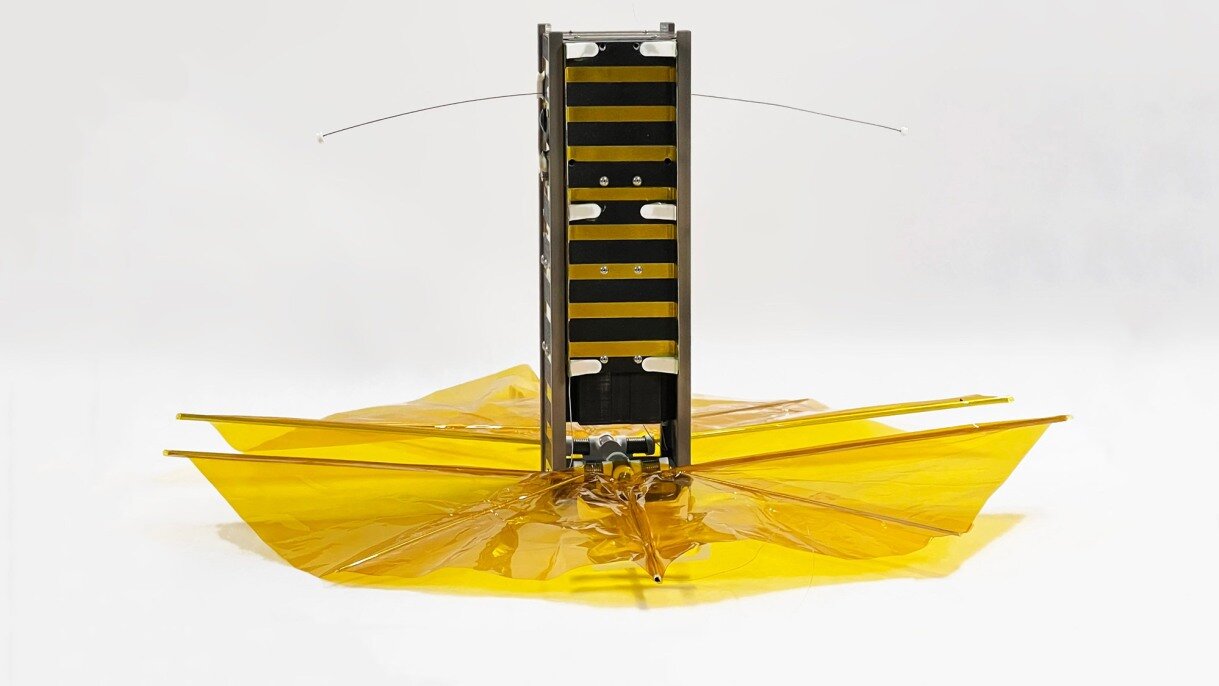The spacecraft, called SBUDNIC, was built by Italian students from materials they found in local stores and powered by 48 AA batteries. Despite this, it successfully worked in orbit for 10 months and could deploy a solar sail that would quickly take it out of orbit and prevent the formation of space debris.

SBUDNIC satellite
Ten months ago, a spacecraft called SBUDNIC went into space on a SpaceX rocket. It was built by students of the engineering school at Brown University in Italy. It was made from materials that could be found in local stores and that were not intended for use in space.
The energy source for it was 48 simple Energizer AA batteries, and the entire process was controlled by a USD 20 processor, usually used in amateur robotics. The students were supported by the National Research Council of Italy and a number of companies specializing in the production of space technology.
The cost of developing the satellite was only 10 thousand dollars. Despite this, it not only withstood all the mandatory pre-launch checks, but was also capable of working in orbit for a long time before its batteries finally ran out. The fact of its functionality is confirmed by the US Air Force, which tracks all space debris in orbit.
Solar sail and Space debris
The last operation that the satellite performed in orbit was the deployment of a tiny solar sail. It was printed by students from polyimide on a 3D printer. The purpose of this satellite is to slow down the spacecraft. In the end, it must quickly descend from orbit.
For 60 years of space exploration, people have put about 15 thousand spacecraft into orbit. Only 7,500 of them remain active. The rest fell to the Earth or turned into space debris. The latter poses a significant danger to everything in orbit.
The experiment from SBUDNIC has shown that it is quite simple to solve it with the help of even a very simple solar sail, which after deployment will not require additional energy to slow down the spacecraft.
The initial altitude of SBUDNIC’s orbit was 520 km, which is significantly higher than that of the ISS. However, just a few months after the deployment of the sail, it was already 470 km and continued to decline. Engineers expect that it will fall to the Earth within 5 years, which is significantly less than a quarter of a century, as spacecraft spend on average in orbit, even if they become non-functional within a few years after launch.
Students’ way into space
It is also interesting what way the students of Brown University have to overcome in order for SBUDNIC to be in space. This is not the first spacecraft created by this educational institution. EQUiSat, created by them earlier, made 14 thousand orbits around the Earth before burning up in the atmosphere in 2020.
This time, about 40 students took part in the development of the satellite. Next, the company D-Orbit joined the case, which turned to SpaceX with a proposal to launch it on its rocket. To get permission to launch, the spacecraft had to pass qualification tests and comply with strict rules and regulations observed by SpaceX and NASA.
The students received the green light after a series of vacuum, thermal and vibration tests. The group then traveled to Cape Canaveral in Florida to deliver SBUDNIC, so it could be inserted into a larger D-Orbit carrier satellite, which was then put on a SpaceX rocket.
According to phys.org
Follow us on Twitter to get the most interesting space news in time
https://twitter.com/ust_magazine

